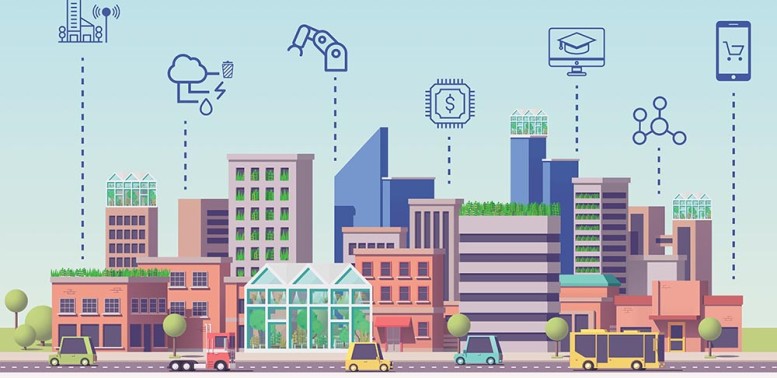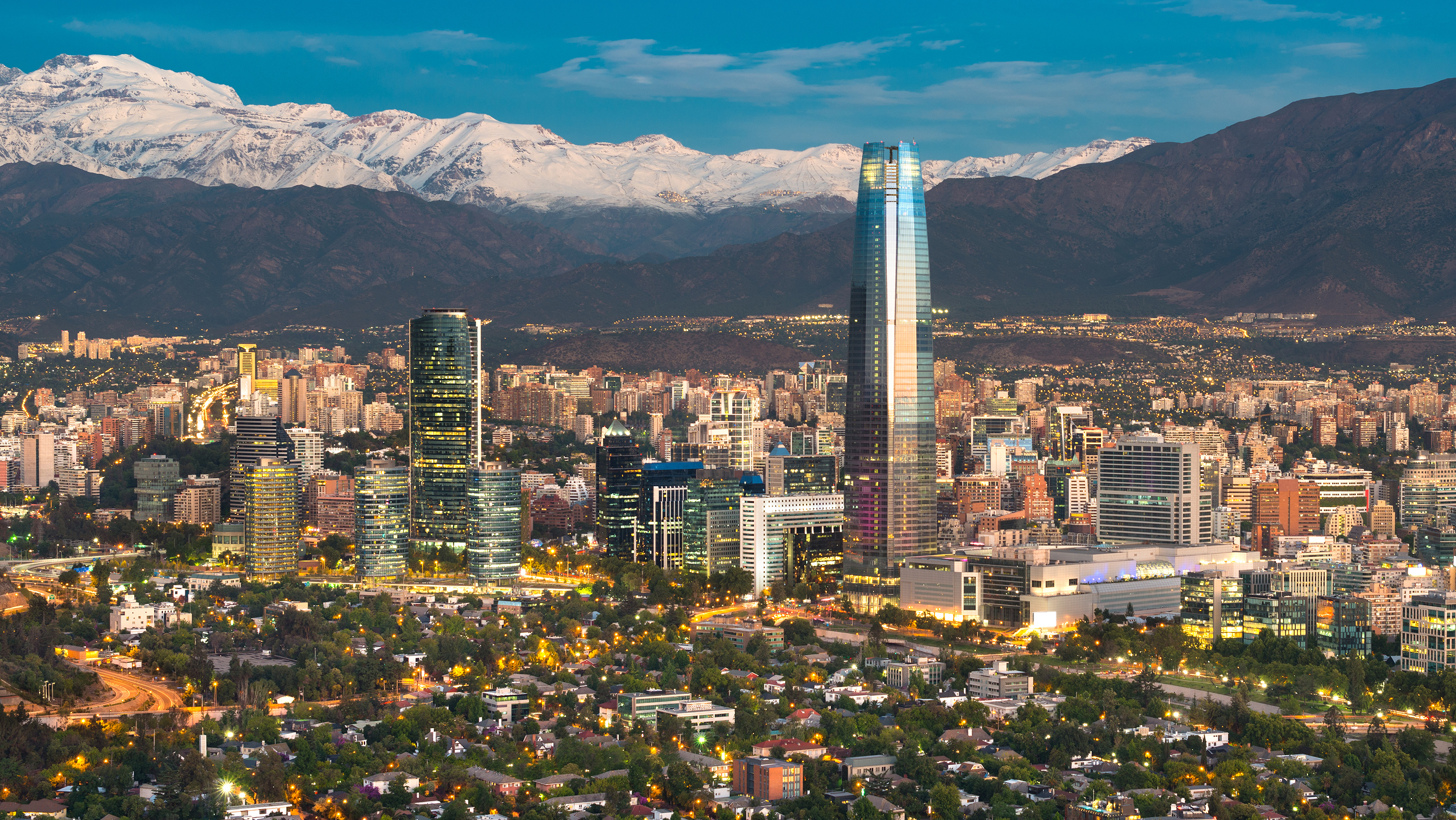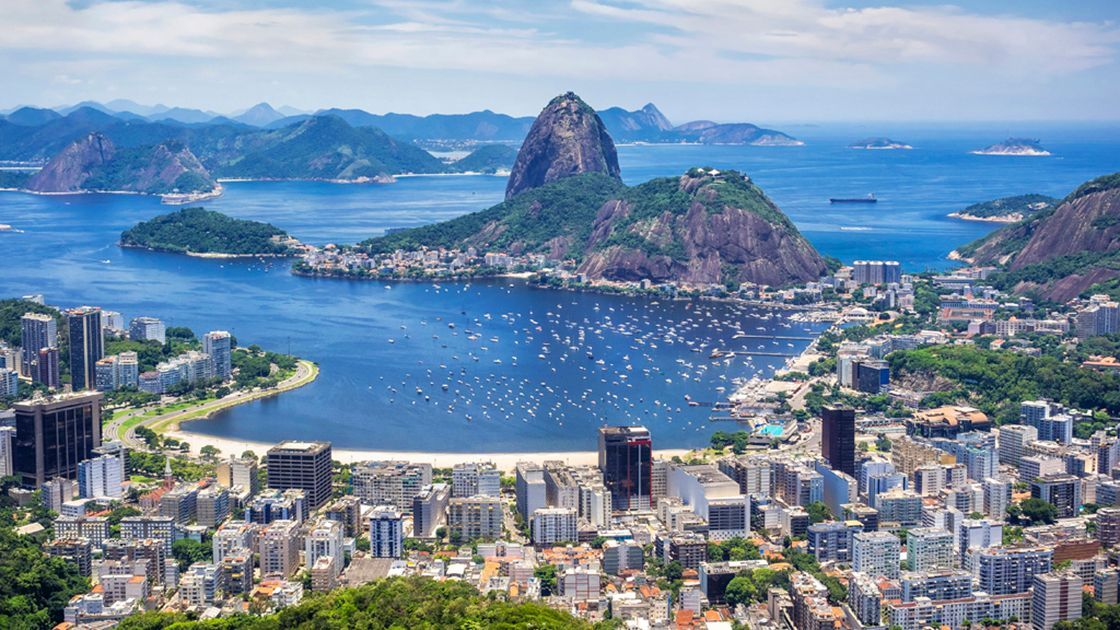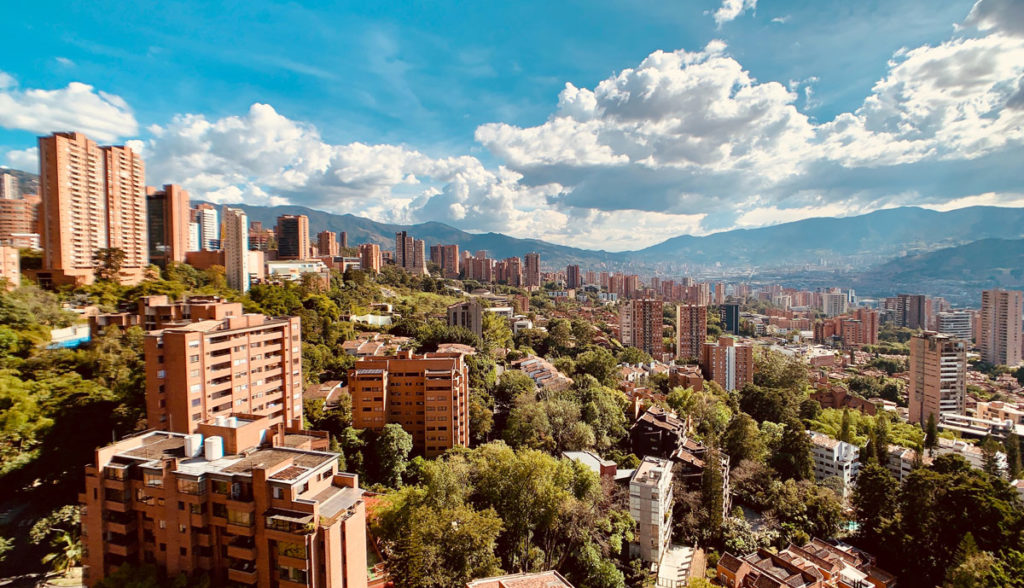Zigurat Global Institute of Technology
Blog / Disruptive Technologies
Smart City Series: the Smart City initiatives transforming the cityscape of South America
Categories

When speaking about smart cities, we often focus on examples from Europe or North America. As they often offer more complete vision and better execution of smart city strategies, cities like Barcelona, Hamburg or Toronto tend to steal all the limelight. To balance the situation, in today’s post we’re going to explore some of the Smart City policies and initiatives in South America. As we mentioned in our post on Mexican Smart Cities, most of the Latin American cities that make it to the different rankings for their smart initiatives are megacities of more than 10 million inhabitants, which makes them technically an antithesis of a truly smart city as there is nothing socially or environmentally sustainable about them. However, given that the social impact that meditated smart city strategies could have in this context is huge when it comes to creating better lives for their citizens, we consider it important to cover cities like Santiago (Chile), Rio de Janeiro (Brazil) and Medellin (Colombia).
Santiago de Chile addressing air contamination and traffic congestion
 Despite struggling with the air contamination and traffic congestion, Santiago goes one step ahead of other cities in South America thanks to its stable economy and government transparency. Support for entrepreneurship (through initiatives such as Startup Chile) has been another key factor to earn Santiago the title of Latin America’s innovation hub. The fact that several key stakeholders (such as a nonprofit called Pais Digital, a research think tank called Fraunhofer, Universidad del Desarrollo, and the Ministry of Transportation and Telecommunications (MTT)) have pledged to take up the cause of smart city, has also been of vital importance. In winter, when there is little rainfall or wind to clear away the pollution, which remains trapped in the valley, life in Santiago becomes unbearable. After declaring the state of environmental emergency three years ago, the Chilean authorities have recognized the significance of clean mobility. Their aim is to increase the number of electric vehicles tenfold by 2022. A fleet of 100 electric buses – with another 100 set to arrive at a later stage – is already driving around Santiago, making it the first Latin American city to invest heavily in electric mobility. On the other hand, exemptions from environmental tax and traffic restrictions are offered to citizens who switch to more energy efficient vehicle. The same applies to taxi and truck drivers. The lack of charging stations and the high up-front costs of purchase have been identified as the biggest barriers to greater adoption of electric and hybrid vehicles. But the government assures they are working on a solution. As of February 1, 2019, the citizens of Santiago can take advantage of a bike share system, catered to them by PBSC Urban Solutions, global provider of sustainable urban mobility systems. The system consists of 3,500 fit bikes and 350 solar-powered stations across the city. Another initiative to overcome the city’s reliance on cars has grown out of the Startup Chile initiative. KAPPO Bike, an award-winning platform developed in Santiago, has set out to make biking more secure by providing the local government with data about the busiest routes that do not have bike lanes. This will enable it to identify cyclists’ needs and improve the city’s bike infrastructure. The above-mentioned smart strategies are Santiago’s best hope to overcome the problems related to air contamination and traffic congestion at one blow. And even if many aspects of the smart city spectrum aren’t covered by those strategies, we applaud the initiatives for addressing the biggest challenges of urban life.
Despite struggling with the air contamination and traffic congestion, Santiago goes one step ahead of other cities in South America thanks to its stable economy and government transparency. Support for entrepreneurship (through initiatives such as Startup Chile) has been another key factor to earn Santiago the title of Latin America’s innovation hub. The fact that several key stakeholders (such as a nonprofit called Pais Digital, a research think tank called Fraunhofer, Universidad del Desarrollo, and the Ministry of Transportation and Telecommunications (MTT)) have pledged to take up the cause of smart city, has also been of vital importance. In winter, when there is little rainfall or wind to clear away the pollution, which remains trapped in the valley, life in Santiago becomes unbearable. After declaring the state of environmental emergency three years ago, the Chilean authorities have recognized the significance of clean mobility. Their aim is to increase the number of electric vehicles tenfold by 2022. A fleet of 100 electric buses – with another 100 set to arrive at a later stage – is already driving around Santiago, making it the first Latin American city to invest heavily in electric mobility. On the other hand, exemptions from environmental tax and traffic restrictions are offered to citizens who switch to more energy efficient vehicle. The same applies to taxi and truck drivers. The lack of charging stations and the high up-front costs of purchase have been identified as the biggest barriers to greater adoption of electric and hybrid vehicles. But the government assures they are working on a solution. As of February 1, 2019, the citizens of Santiago can take advantage of a bike share system, catered to them by PBSC Urban Solutions, global provider of sustainable urban mobility systems. The system consists of 3,500 fit bikes and 350 solar-powered stations across the city. Another initiative to overcome the city’s reliance on cars has grown out of the Startup Chile initiative. KAPPO Bike, an award-winning platform developed in Santiago, has set out to make biking more secure by providing the local government with data about the busiest routes that do not have bike lanes. This will enable it to identify cyclists’ needs and improve the city’s bike infrastructure. The above-mentioned smart strategies are Santiago’s best hope to overcome the problems related to air contamination and traffic congestion at one blow. And even if many aspects of the smart city spectrum aren’t covered by those strategies, we applaud the initiatives for addressing the biggest challenges of urban life.
Rio de Janeiro concentrating on disaster prevention and management
 When Rio de Janeiro was chosen to host the 2016 Olympic Games and some of the most important matches of the 2014 FIFA World Cup, the city had to face tremendous challenges to increase the security of its streets and establish a reliable monitoring system to guarantee that unpredictable weather conditions were handled with the proper measures by local authorities. This resulted in Rio’s smart city initiatives being centered on disaster prevention and management, and freedom of information. In partnership with IBM and Oracle, a Center of Operations was built to tackle natural disasters and relevant emergency responses. In addition to disaster prevention and management, these offices host 30 departments from the local government including traffic surveillance, security, weather forecasting, electricity and gas providers. Different areas exchange data amongst themselves to increase the efficiency of their services. The aim is to manage day-to-day city services and emergency services from the same place and allow them to be linked. For example, garbage trucks are coordinated via GPS so that, in case of an emergency, these trucks can be re-purposed for other tasks, improving response times for the city.
When Rio de Janeiro was chosen to host the 2016 Olympic Games and some of the most important matches of the 2014 FIFA World Cup, the city had to face tremendous challenges to increase the security of its streets and establish a reliable monitoring system to guarantee that unpredictable weather conditions were handled with the proper measures by local authorities. This resulted in Rio’s smart city initiatives being centered on disaster prevention and management, and freedom of information. In partnership with IBM and Oracle, a Center of Operations was built to tackle natural disasters and relevant emergency responses. In addition to disaster prevention and management, these offices host 30 departments from the local government including traffic surveillance, security, weather forecasting, electricity and gas providers. Different areas exchange data amongst themselves to increase the efficiency of their services. The aim is to manage day-to-day city services and emergency services from the same place and allow them to be linked. For example, garbage trucks are coordinated via GPS so that, in case of an emergency, these trucks can be re-purposed for other tasks, improving response times for the city.
Medellin using smart city strategies for social change
 Colombia’s second largest city, Medellín has undergone a miraculous transformation from a drug capital to a hub for technology and innovation. From 1991 to 2010, Medellin’s homicide rate plunged nearly 80% thanks to a series of smart strategies oriented to the citizen. The city built public libraries, parks, and schools in poor hillside neighborhoods and constructed a series of transportation links from there to its commercial and industrial centers. For example, the ten library parks gather their surrounding neighborhoods for events and reading. There is now also a 75 kilometers long metropolitan green belt, where they plan to build community gardens, recreational spaces hiking trails and housing for some of the poorest residents. Medellin has also put an effort into achieving major transparency in governance. Online platform MiMedellin.org allows the locals to make their own decisions on how to spend the five percent of the city’s budget that is distributed across the city’s neighborhoods - whether it is allocated for education, infrastructure or cultural events. A public health program Buen Comienzo has done a lot to improve the life of low-income residents offering various health and education programs to support families during their children’s first five years of life.
Colombia’s second largest city, Medellín has undergone a miraculous transformation from a drug capital to a hub for technology and innovation. From 1991 to 2010, Medellin’s homicide rate plunged nearly 80% thanks to a series of smart strategies oriented to the citizen. The city built public libraries, parks, and schools in poor hillside neighborhoods and constructed a series of transportation links from there to its commercial and industrial centers. For example, the ten library parks gather their surrounding neighborhoods for events and reading. There is now also a 75 kilometers long metropolitan green belt, where they plan to build community gardens, recreational spaces hiking trails and housing for some of the poorest residents. Medellin has also put an effort into achieving major transparency in governance. Online platform MiMedellin.org allows the locals to make their own decisions on how to spend the five percent of the city’s budget that is distributed across the city’s neighborhoods - whether it is allocated for education, infrastructure or cultural events. A public health program Buen Comienzo has done a lot to improve the life of low-income residents offering various health and education programs to support families during their children’s first five years of life.
Conclusion
Nowadays, there is no doubt that cities face a wide spectrum of different social and environmental challenges. With this post, we hoped to show you that where there’s a problem there is also a solution and that different smart city strategies cater to different needs and cities. All the above-mentioned examples of smart cities in South America have their own unique strategy and are therefore a perfect example of different ways of being smart.



